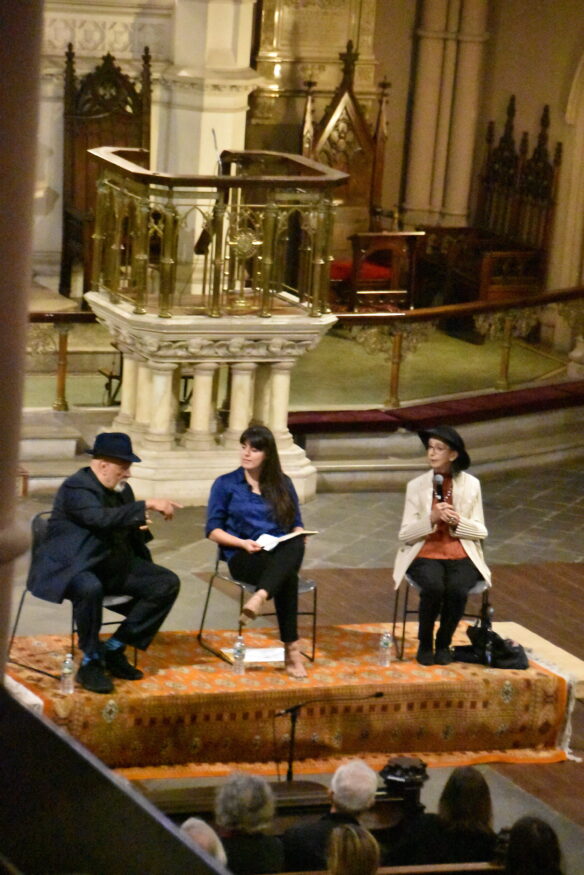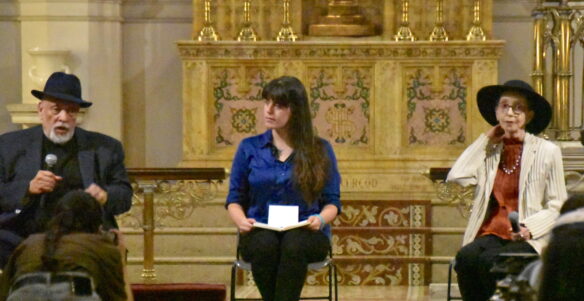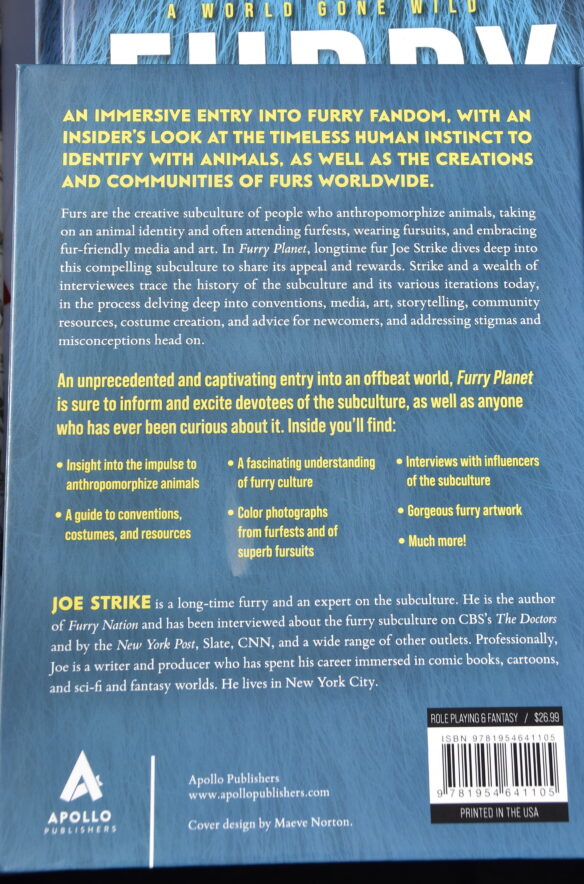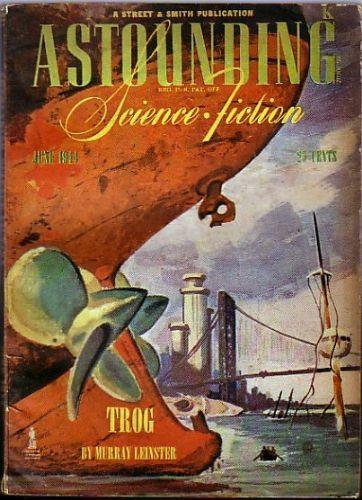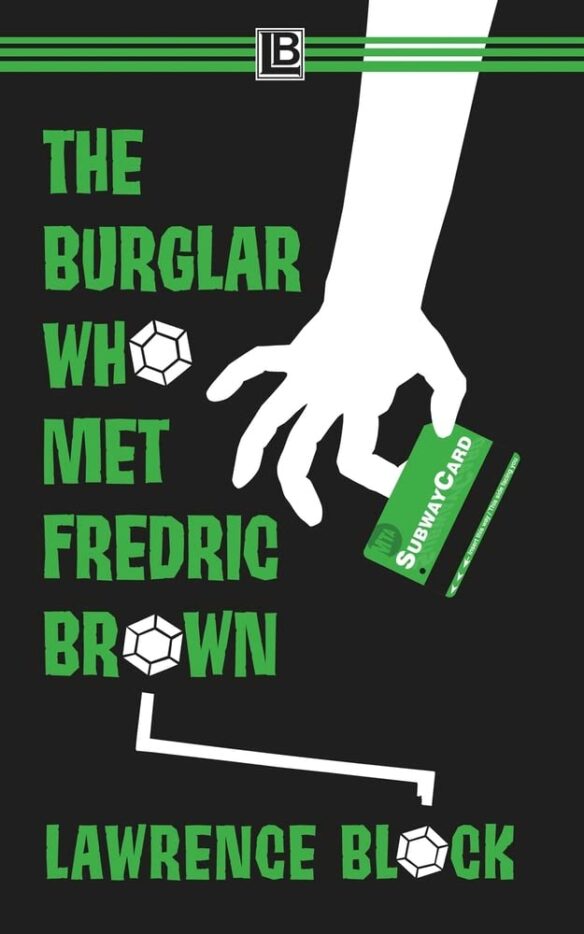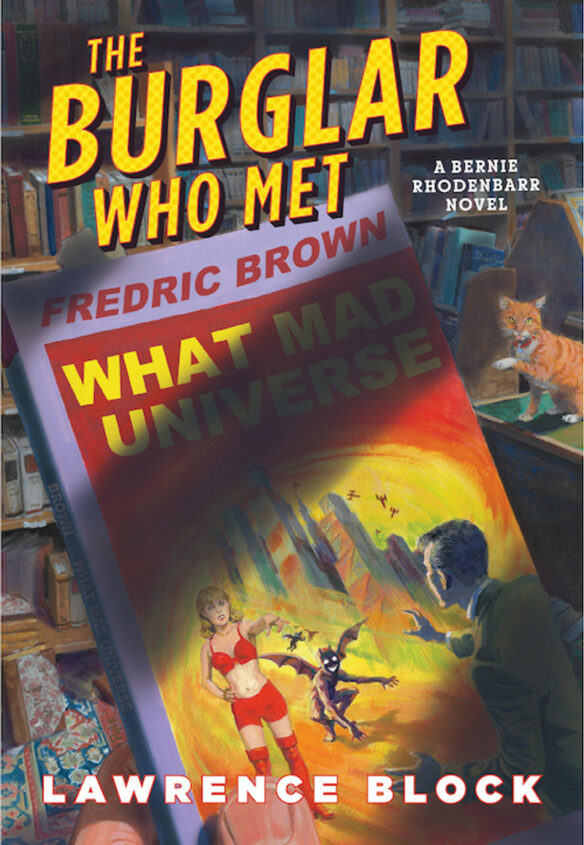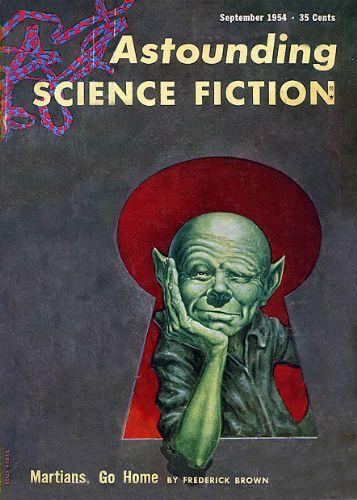(1) ’69 IS DIVINE. Galactic Journey delivers kudos to the finest sff of 55 years ago: “[December 26, 1969] A Wreath of Stars (the best science fiction of 1969!)”
… Don’t worry; we’ve got you covered. Anything on this list is worth reading/watching. Just peruse the Journey library, settle into your coziest chair, and enjoy the week before New Year’s!…
For example, 1969 was a terrific year for novels:
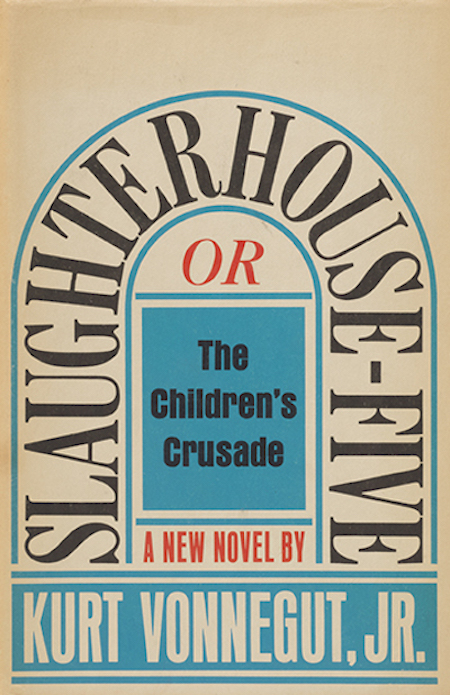
Slaughterhouse Five, by Kurt Vonnegut Jr.
The story of an American POW during World War 2, culminating in the Dresden firebombing. Vaguely SFnal, such trappings are really there so the author could approach the traumatic material at a distance. Big for a reason.
The Left Hand of Darkness, by Ursula K. Le Guin
An unique setting and an unique problem; a message piece for today aimed at the sexists of tomorrow.
Ubik, by Philip K. Dick
One of Dick’s less comprehensible and yet somehow more compelling works, combining a grab-bag of innovations, commentaries on commercialism, and questionings of reality.
The Jagged Orbit, by John Brunner
A novel of worsening race relations in the early 21st Century, told in Brunner’s inimitable avante garde style.
The Andromeda Strain, by Michael Crichton
A “scientific thriller” about a mystery plague, and the efforts of five scientists to understand its origin and impact.
Honorable Mention
- Isle of the Dead, by Roger Zelazny
- The Face in the Frost, by John Bellairs
- Operation Changeling, by Poul Anderson
- Heiros Gamos, by Josephine Saxton
- A Sweet Sweet Summer, by Jane Gaskell
- Seahorse in the Sky, by Edmund Cooper
- The Unicorn Girl, by Kurland, Michael
- Macroscope, by Piers Anthony
—
We’ve got it all: fantasy, science fiction, satire, psychedelia. And more sex than ever. There’s nothing really “conventional” or “traditional” here. Even the Anderson is more outré than usual.
(2) MORE FOWL, LESS JOY ON UK TV AT CHRISTMAS. [Item by SF Concatenation’s Jonathan Cowie.] Wallace & Gromit: Vengeance Most Fowl was the second most-viewed TV programme in Brit Cit over Christmas 2024.
In fact, the top ten most watched programmes in the UK were all BBC including Doctor Who Christmas episode “Joy to the World”.
At 4.11 million viewers, it was not as popular as the King’s Christmas broadcast at 6.82 million.
Details at the BBC: “Christmas TV: Gavin and Stacey finale tops ratings”.
(3) FX WITH HUMAN FINGERPRINTS. “A Grand Return: A Cracking Set Visit to ‘Wallace & Gromit: Vengeance Most Fowl’” — Animation Magazine scored a look behind the scenes.
On a recent visit to Aardman’s Bristol studio, the design of the project — from the puppetry to the set pieces — revealed (as one would expect) a healthy mix of Ealing comedy and Hollywood homage, with the impeccable artistry taking place one frame at a time!…
…With the task of managing large crews, and given the time and effort involved in making a feature-length stop-motion film, Park usually shares directorial duties — with Peter Lord on the first Chicken Run and Steve Box on The Curse of the Were-Rabbit. This time he partnered with Crossingham, who for the last 10 years has been creative director of the Wallace & Gromit brand. “Merlin was always one of the top animators on all our projects,” recalls Park, “but he also seemed to get things really quickly and has done some of the best bits in the Wallace & Gromit films of late. Also, he’s good at directing and good at humor. So, when it came [time] for me to think about whom I would share the journey with, a fellow visionary, the choice wasn’t difficult really.”
At the studio, we were shown initial artwork before we saw the puppets, which are the perfect amalgamation of craft and engineering. Each detail and iteration of the designs are approved by Park and Crossingham before scans are produced for the 3D-printed molds that are used for both hard and softer materials to build onto the characters’ armatures. Over time, the techniques have evolved as more animators have worked on productions. For instance: Wallace’s jumper was originally clay and is now foam latex. Depending on what a character is doing, only heads and hands are clay, or, depending on articulation, silicone appendages are used, which is easier to maintain….
… A human-made look and feel is a vital part of Aardman animation, but the studio is not averse to technology, something Park reflects on further. “The tactile quality is the spirit of it all, really. But we work with technology a lot. It’s funny, when Toy Story came out we were asking: ‘How long have we got left?’ But there has been a genuine resurgence of stop motion, and we’ve contributed to that.”…
(4) SILENT NEVERLAND. Well, except for the organ music. “The First ‘Peter Pan’ Blockbuster Turns 100 but Hasn’t Grown Up” – learn its history from the New York Times (link bypasses the paywall).
… But another version predates all of those: “Peter Pan,” a silent film released 100 years ago this month, becoming a blockbuster in its day.
The 1924 film, which The New York Times called “a pictorial masterpiece,” was considered a pioneer in selling movie-related merchandise. But it fell out of sight after talkies replaced silent films and Walt Disney bought the film rights to make his own “Peter Pan.” Many feared it lost until it was rediscovered in the 1940s by a film preservationist who found a copy at a theater in upstate New York that had trained organists to play along with silent movies….
… Some elements of the film would have been familiar to people who had seen the play written by Barrie and first performed in 1904. The Darling children fly with the help of wires, and their canine nurse, Nana, is played by a man in a dog suit (George Ali, reprising his stage role). But its director, Herbert Brenon, also sprinkled cinematic pixie dust on the story: Captain Hook’s ship flies out of the water, Peter Pan sweeps away tiny fairies with a broom and there are close-ups of a minuscule Tinker Bell, who is usually depicted on stage as a light….
(5) THE VALUE OF DELAYING THE INEVITABLE. Doris V. Sutherland analyzes “How Naomi Kritzer’s Science Fiction Strips Away Cyberspace” at Women Write About Comics.
We have entered an era of AI slop. Periodicals are struggling with floods of submissions cooked up by ChatGPT rather than human imaginations, while readers downloading ebooks from Amazon are faced with the possibility of their latest purchase being the churned-out product of AI masquerading as actual creativity or scholarship.
While science fiction is no more affected by this than any other genre, its duty to predict the future (albeit often through an escapist lens) puts it in a unique position. SF has always had an ambivalent relationship with the real world’s scientific and technological advances; never before, though, has the genre been faced with a development that offers such a direct existential threat. So, as publishers are faced with deluges of machine-generated hackwork and technology actively strips itself of romance, what futures are SF authors dreaming up?
There are many works that can serve as answers to this question, and when the Hugo Awards were presented earlier this year, they pointed out two particularly relevant examples: namely, the pair of contrasting yet thematically overlapping stories by Naomi Kritzer which won the Best Short Story and Best Novelette categories. Even though neither addresses ChatGPT or other pseudo-creative AI directly, both stand as strong-minded retorts to our era of ever-encroaching digitisation….
(6) SUDDENLY THERE WAS A KNOCK AT THE DOOR. Curtis Evans helps readers climb an author’s twisted family tree in “Fredric Brown: Chronicler of Con Artists, Clowns, and Capitalist Excess” at CrimeReads.
…In the early 1890s Karl Brown forsook the Edenic little world of Oxford [Ohio] and moved to hustling and bustling Cincinnati, then a burgeoning metropolis of some 300,000 people (about the same size as it is today). There in 1894 he married Emma Graham, daughter of a railroad mail clerk, when he was twenty-two and she was twenty. After a dozen years of marriage—quite a long delay—Emma bore the couple’s only child, whom they named “Fredric” without the second “e” and the “k,” like actor Fredric March….
(7) DEAR FUTURE. Upworthy listens in as “Benedict Cumberbatch reads Kurt Vonnegut’s ‘frighteningly accurate’ letter to people living in 2088”. Includes a link to the speech.
…To work with “Nature’s stern but reasonable surrender terms,” Vonnegut advised the following:
1. Reduce and stabilize your population.
2. Stop poisoning the air, the water, and the topsoil.
3. Stop preparing for war and start dealing with your real problems.
4. Teach your kids, and yourselves, too, while you’re at it, how to inhabit a small planet without helping to kill it.
5. Stop thinking science can fix anything if you give it a trillion dollars.
6. Stop thinking your grandchildren will be OK no matter how wasteful or destructive you may be, since they can go to a nice new planet on a spaceship. That is really mean, and stupid.
7. And so on. Or else.
(8) RIPPED SHIRT AND JODHPURS. You can own this iconic pulp fashion statement: “Doc Savage: The Man of Bronze One:12 Collective Doc Savage (Deluxe Edition) Action Figure”, offered at Big Bad Toy Store. (Click for larger images.)


Doc Savage – The Man of Bronze, leaps off the pages of pulp fiction and into the One:12 Collective!
The One:12 Collective Doc Savage is decked out in his iconic rugged safari shirt, jodhpurs and high-boots with secret compartments. Also included are a ripped shirt option, his trusted utility vest and two wristband options. The Man of Bronze features four interchangeable head portraits, including one with side-parted hair from the pulp era, and the others showcasing his buzzcut with a widow’s peak as seen in pocket novels and comics.
Fully equipped and ready for action, Doc Savage carries an array of weapons and gadgets, including night vision goggles, a gas mask, an infrared lantern, a bowie knife, a mini periscope, a folding grapple hook, multiple grenades, and his Super Machine Pistol paired with ammo rounds and blaster FXs.
(9) TODAY’S BIRTHDAY.
[Written by Paul Weimer.]
Born December 28, 1932 – Nichelle Nichols. (Died 2022.)
By Paul Weimer: A woman of color on the bridge of the USS Enterprise. Unpossible.
Possible, and Nichelle Nichols made it happen.
Even watching The Original Series in reruns in the late 70’s and early 1980’s, I could see how revolutionary, iconic and important her role as Lt. Uhura really was. Like Koenig’s Chekov and Takei’s Sulu, her presence helped solidify that the future of space and the world was not exclusively the province of white men doing white manly things.
Certainly, she was often underserved by scripts and reduced usually to a glorified telephone operator, but when she did get the chance to shine, did she shine. “Mirror, Mirror”, particularly, she is essential to helping keep the Mirror Universe crew off balance and allowing them all a chance to get home.
And of course, there was that kiss in “Plato’s Stepchildren” with Kirk, the kiss that drew the ire of the conservatives of the American South. Reportedly, the plan was to film the scene with and without the kiss, but Nichols conspired with Shatner to mess up every non-kiss take, and so the scene had to be included.
Even so, she nearly left the series early, but Dr. Martin Luther King asked her to stay on the series, emphasizing the importance of her place on the bridge. She did, and I am very glad that she did.
But my favorite Nichelle Nichols Uhura moment wasn’t in the original series, or the first two movies. No, it comes in Star Trek III: The Search for Spock. Kirk has to managed to steal the Enterprise to go after Spock, whose soul is lodged in Dr. McCoy (and none too happy about it). Uhura is crucial to the plan to getting control of the transporter and allowing Kirk and the others to get onto the Enterprise and steal it. “Mr Adventure” (the bored transporter officer bowled over by Nichols’ Uhura) never knew what hit him. Like in “Mirror, Mirror”, you underestimate Nichols’ Uhura at your peril. Subsequent depictions of the character have taken Nichols’ direction and lead in this regard and run with it.
Outside of Star Trek, her work with NASA helped recruit numerous people to the astronaut program, particularly women and people of color. I figure it was a way of her paying things forward.
She died in 2022. Requiscat in pace.

(10) TODAY’S BIRTHDAY, TOO.
[Written by Paul Weimer.]
Born December 28, 1922 – Stan Lee. (Died 2018.)
By Paul Weimer: The ultimate comic book fan and creator.
I’ve mentioned in other essays that I am a Marvel over a DC fan when it comes to comics as well as the movies. This was true long before Iron Man started the MCU, this goes back to my first comic reading in the 1980’s. I didn’t start my comic reading in DC, I started with Marvel.
And the man who made that all possible was Stan Lee. His characters, his worlds, his ideas appealed to me more. Yes, I am talking about Spiderman, the ultimate misunderstood young man, co-created by Lee and Steve Ditko. So it was thanks to Lee’s co-creation of Spiderman that I started reading comics, and those comics were Marvel. And while Superfriends the cartoon was fun enough…it was Spiderman and his Amazing Friends that was the cartoon that I liked even more.
My first actual comic book was a Spiderman and a Wasp issue. I didn’t have issues before or after, and I am not sure how I got it. I just remember it involved the mercenary superhero Paladin, who had an American Express card in the name of his superhero name.
Finally, I enjoyed the many cameos that Lee managed in the Marvel movies, from Iron Man all the way to Guardians of the Galaxy. For his creation or co-creation of so many characters and aspects of the Marvel verse, it amused me for Lee in so many faces to show up again, and again, and yet again. He was the creator of the Marvel verse…and its biggest fan at the same time. Like a Hitchcock film, spotting Stan Lee in a Marvel movie was a spectator spot for me.
Stan Lee, alas, died in 2016.
Excelsior, good sir.

(11) COMICS SECTION.
- Bizarro admires sartorial splendor.
- Cornered changes one letter.
- Reality Check narrows it down.
- Thatababy borrows a witch’s minion.
(12) THIS IS NOT A DRILL. Contingent Magazine would like you to know about “The ‘Tooth’ Behind Star Trek”.
…During the 1960s, Air Force lieutenant colonel Jack L. Hartley served at Brooks Air Force Base, where he studied the problem of what to do if an astronaut got a toothache while in space. As a result, Hartley developed the science of astrostomatology (space dentistry), along with a portable astronaut dental kit for the Aerospace Medical Division of the Air Force Systems Command.
Hartley published numerous papers about his research, which got him noticed by the media. He also promoted astrostomatology and his astronaut dental kit through appearances on television shows like What’s My Line, To Tell the Truth, and The Tonight Show. When he presented Johnny Carson with a real human skull, to show how to give injections to the upper and lower jaws to make them numb, Carson couldn’t resist holding up the skull and intoning: “Alas, poor Yorick!”
I was able to track down Hartley’s daughter, Patricia, a retired archivist who worked at the Southwest Research Institute in San Antonio, Texas. Patricia explained her late father’s role in the creation of Star Trek: “He collaborated a fair amount with Roddenberry. He [Roddenberry] was really very good about trying to get things right, in spite of the fact that he had a very limited budget. And he didn’t have a lot of tools to show. But he created a whole lot of things. And Dad was just one of the ones that he was talking to help him design this stuff.” …
(13) INSPIRATION. “Gregory Maguire reveals the movie line that inspired ‘Wicked’” at Upworthy. (It’s not “Pay no attention to that man behind the curtain.”)
… Maguire was visiting Beatrix Potter’s farm in Cumbria, England, and thinking about “The Wizard of Oz,” which he had loved as a child and thought could be an interesting basis for a story about evil.
“I thought ‘alright, what do we know about ‘The Wizard of Oz’ from our memories,'” he said. “We have the house falling on the witch. What do we know about that witch? All we know about that witch is that she has feet. So I began to think about Glinda and the Wicked Witch of the West…
“There is one scene in the 1939 film where Billie Burke comes down looking all pink and fluffy, and Margaret Hamilton is all crawed and crabbed and she says something like, ‘I might have known you’d be behind this, Glinda!’ This was my memory, and I thought, now why is she using Glinda’s first name? They have known each other. Maybe they’ve known each other for a long time. Maybe they went to college together. And I fell down onto the ground in the Lake District laughing at the thought that they had gone to college together.”…
(14) WICKED DELETED SCENES. Several are available on YouTube. USA Today devotes an article to one of them: “’Wicked’ deleted scene shows Ariana Grande’s Galinda hit with news”. (Click here to see the scene.)
…Start spreading the news — charming Prince Fiyero (Jonathan Bailey) is leaving today to go to Shiz University in this deleted scene from the blockbuster musical “Wicked.”
Most popular Shiz student Galinda (Ariana Grande) literally gets hit with the news as The Shiz Gazette, proclaiming Prince Fiyero’s arrival, flies into her beautiful face.
The dazzling scene that follows the floating newspaper around the buzzing university didn’t make it into director Jon M. Chu’s adaption of the beloved Broadway musical, which clocked in at 2 hours and 40 minutes (and it was only the first of two parts).
However, the moment and other deleted scenes will be featured on the “Wicked” digital release, due Dec. 31…
(15) BLINDED BY THE LIGHT. [Item by Steven French.] Those of us who have to drive around in low winter sun (like right now, here in the North of England!) will certainly sympathise with future astronauts: “Astronauts face unique visual challenges at lunar south pole”.
Humans are returning to the moon—this time, to stay. Because our presence will be more permanent, NASA has selected a location that maximizes line-of-sight communication with Earth, solar visibility, and access to water ice: the Lunar South Pole (LSP).
While the sun is in the lunar sky more consistently at the poles, it never rises more than a few degrees above the horizon; in the target landing regions, the highest possible elevation is 7°. This presents a harsh lighting environment never experienced during the Apollo missions, or in fact, in any human spaceflight experience.
The ambient lighting will severely affect the crews’ ability to see hazards and to perform simple work. This is because the human vision system—which, despite having a high-dynamic range—cannot see well in bright light and cannot adapt quickly from bright to dark or vice versa.
(16) LUCKIER THAN ICARUS. “NASA’s Parker Solar Probe phones home after surviving historic close sun flyby. It’s alive!” – Space.com says, “The spacecraft flew within 3.8 million miles (6.1 million kilometers) of the solar surface to ‘touch the sun’ on Christmas Eve.”
Two days after a historic Christmas Eve sun flyby that flew closer to the star than any spacecraft in history — taking the car-sized spacecraft nearly a tenth as close to the sun than Mercury — the Parker Solar Probe phoned home for the first time since its solar encounter. The space probe sent a simple yet highly-anticipated beacon tone to Earth just before midnight late Thursday (Dec. 26).
Scientists on Earth were out of contact with the Parker Solar Probe since Dec. 20, when the spaceraft began its automated flyby of the sun, so the signal is a crucial confirmation that the spacecraft survived, and is in “good health and operating normally,” NASA shared in an update early Friday (Dec. 27).
[Thanks to John King Tarpinian, Chris Barkley, Cat Eldridge, Gideon Marcus, SF Concatenation’s Jonathan Cowie, Steven French, Kathy Sullivan, Teddy Harvia, Mike Kennedy, and Andrew Porter for some of these stories. Title credit belongs to File 770 contributing editor of the day Daniel Dern.]









